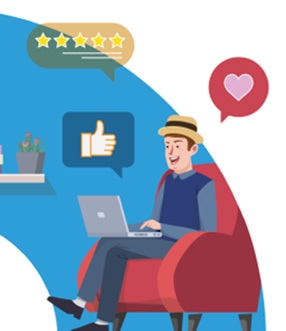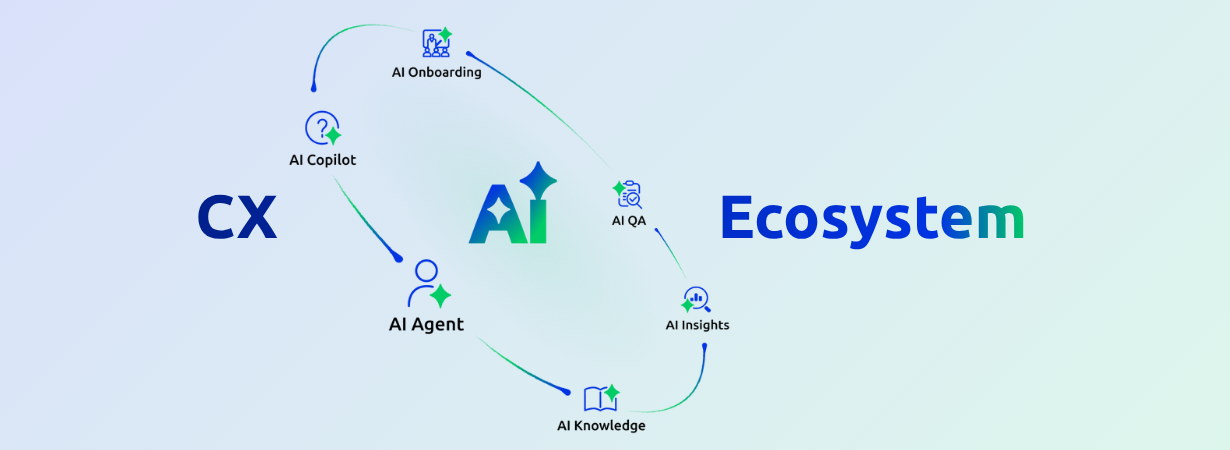It is no surprise that customer experience ranks highly. Studies have shown that companies that follow through with customer experience strategies achieve increased revenue, higher customer satisfaction rates and fewer complaints in general.
Customer experience is described as the sum total of all the experiences and interactions that the customer has had from your business relationship.
It is very different from “customer service” which is focused more on the way a service is delivered before, during and after the purchase. The two are however tied very closely together and are somewhat interdependent.
Generally speaking, a customer’s first point of contact with a business is either via the phone, email or one-on-one interactions. This should be the first place to execute your customer experience improvement program.
In order to develop a successful customer experience strategy, you first have to have a vision, understand and relate to your customers, get real-time feedback while also managing employee responses and following a preset framework.
Having an organizational framework that is aligned with customer experience is important because all the employees have to chip in. Knowing your customer allows you to select the best communication channels to use for better CX.
Here are 10 first steps to improve your customer experience.
-
Customer-Focused Culture
The first step is to create a culture that is focused on customer satisfaction. The perspective of the customer has to be factored into the company vision and instilled into your company’s employees if you stand a chance of succeeding in your CX efforts.
The best way to do this is to create a list of statements that will serve as guiding principles, and focus all staff around these.
Zappos, for instance, use their core family values which have been ingrained into their culture to deliver exemplary service, show humility, and welcome change.
Starbucks also carries out several customer experience seminars where employees are trained on etiquette, addressing customer complaints and standard responses to use.
Both companies have benefitted from having a customer-oriented culture, both in terms of revenue and customer loyalty.
These guiding principles will drive the organization’s behavior when they are embedded into every employee, ensuring that decisions made are customer-friendly and that no action takes place without a deep consideration of how it will affect your customers.
-
Know Who Your Customers Are
Second, know who your customers are and address their specific needs to improve your customer experience.
Not all customers have the same needs and you can find many different types of customers contacting your contact center – all with different desires and expectations.
Knowing customer demographics like age, race, and residence is not enough – think more widely to consider the ways they’ll be using your products and services, their expectations of service from you, and the ways they prefer to interact with you, for example.
With a deep understanding of who your customers are, employees should empathize with your customers and view the service from their point of view, enabling you to deliver better experiences across the board.
One way you can do this is by creating customer personas with a name and personality attached, and getting your staff to contribute to this. For example, “Fridah is 29 years old and likes following a video tutorial” or “James, 44 prefers reading manual instructions on the website”.
You should find that simply by humanizing your customers through overt profiles and challenging your staff to think more deeply about their needs, your staff start to think less about your products and services in isolation, and start to think more about how they fit your customer base.
-
Mobile Customer Support
Mobile phones are the fastest adopted technology of modern times, and in the U.S more than 91% of adults own a cell phone. Out of these, 63% use their phones a few times every month to search for products and customer support.
But many mobile interfaces are badly designed and difficult to use, even when website content is optimized for mobile viewing. This results in customers calling the company for simple queries they could have solved themselves, causing contact centers to become flooded with queries.
Companies using customized call tracking and chat software can benefit from built-in integrations that make support resources available for mobile viewing. This greatly improves customer experience since the customer can get their problem solved on their mobile phone.
-
Live Chat
Live chat is crucial in improving customer experiences as it offers a real-time channel to find solutions for customers without having them leave your website.
Younger demographics especially prefer live chat over phone interactions, with more than 56% of people between 18 and 34 preferring live chat.
Live chat is especially popular among online retailers who don’t want to let customers slip away if they’re the least bit interested. But nowadays, live chat is not restricted to eCommerce, or to simple text-based messaging. Some providers allow co-browsing, where the customer care agent takes temporary control over the user’s browser and provides technical troubleshooting or directs them to pages where they will find resources. Not to mention the influx of audio/video chat services, integrated knowledge bases and Chatbot services.
Live chat can also boost business operations by collecting contextual information that tells the agent what pages have been visited before and which products have already been viewed. This metadata can be used to improve sales and marketing efforts, as well as improve technical troubleshooting for support staff.
-
Social Media Support
Social media is not just for individuals. Many of the biggest brands use it as a way of communicating with the customers in a more customer-centric way.
Companies can share interesting content and answer questions from customers on social media platforms. Also, by asking interesting questions, the marketing department can get more customer insight which is a crucial step in developing a customer experience strategy.
-
Self-Serve Tools
Self-service portals are doubly useful for companies because they can improve customer experience and increase the company’s capacity by reducing workload.
Customers who have experienced a negative encounter with a call center will prefer the self-service portal. Younger customers who expect instant gratification, and will lose their marbles if their customer care call or live chat goes wrong, are often better off with self-help to stop queries in their tracks and provide support instantly.
With dissatisfaction rates standing at 57%, according to Forrester Research, it is a great CX strategy to provide self-serve tools. Empowering customers to take matters into their own hands can improve their customer experience by itself.
Bear in mind too that customers are very informed about the product even before they talk to the salesperson, and a self-serve portal is reassuring to them.
-
Suitable Channels for Your Customer Base
Part of providing a remarkable customer experience is to communicate to customers over suitable communication channels. Gone are the days when you only had to call customer care to get assistance.
Nowadays, you can interact with customers over text, email, text message and social media depending on what they are comfortable with.
For instance, people above 40 could prefer calling while a younger demographic are going to enjoy the experience of connecting over social media.
Consider your industry, too. If you’re working in a very formal professional industry, communication by phone call or even post might be more appropriate for communications than social media.
No single interaction medium fits all, and you will need to experiment to find out which fits the bill for your customers.
-
Have Someone Responsible for Customer Experience
Customer experience is often a multi-disciplinary effort, overlooking a myriad of departments including customer service, marketing, sales, product and so on. A customer experience manager or CXM is the link between the customer and the company, and the person who helps coordinate CX work across these different departments.
A CXM’s role is to engineer the product’s life cycle, from the customer’s perspective, from beginning to end. Having someone to be responsible for customer experience can help consolidate efforts from different departments towards one common goal.
The CXM is responsible for all customer engagement tasks and comes up with relevant content for each target market. This exposes him/her to customer feedback that in turn is used to steer the product in the right direction.
When it comes to redesigning a product or service, the customer experience manager provides insight in the formulation of such a re-launch. The CXM then follows the product to the end of its life cycle and maximizes profits before pulling the plug on production and distribution.
-
Be Able to Research and Gather Data
Conducting research and data collection is crucial to the customer experience.
When customers call your company, they expect a certain quality of service. To win them over, you need to deliver above average. Customers have a higher likelihood to pay more money if the customer service they receive is exemplary. A recent report from ICMI confirmed that 69% of customers will do that.
Exceptional service doesn’t happen by accident – you have to conduct extensive research and gather feedback from the customer to establish their needs, wants and expectations, and to gauge where you can deliver more. Not only is data important in the formulation of a customer experience strategy, data will also be needed to measure results.
This brings us to the next point:
-
The Ability to Benchmark and Evaluate
Are your processes, team-work, and technology paying off? Without measuring the ROI of customer experience, all the efforts will be futile.
To come up with the best strategy means trying out different things and being able to collect data will ensure you know what works and what doesn’t. One way to measure the effectiveness of a strategy is to ask “Would you recommend this service to a friend or relative?” You can use a 5-point or 10-point scale to rate how happy or unhappy they were with the service.
Customer experience is the new battleground, and prioritizing it will give you an edge over your competition. But there needs to be a common vision, shared and ingrained in all the employees.
This will take some time, but when the right values are instilled into the company culture, it will be a huge payoff. Remember to benchmark and analyze the methods you use to ensure you are getting business results. A customer experience campaign can be costly, but you can profit from it by closely monitoring results.







